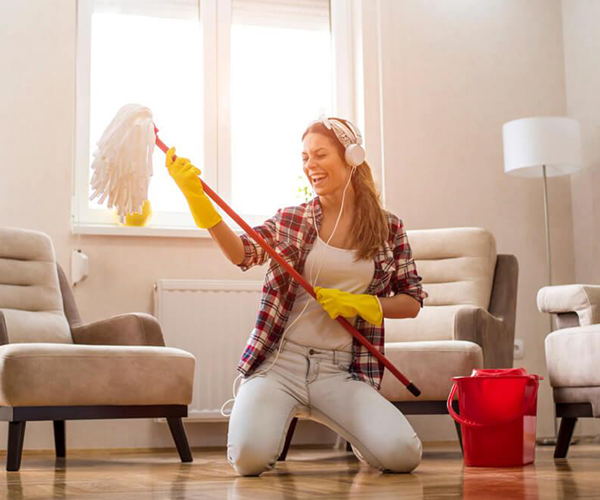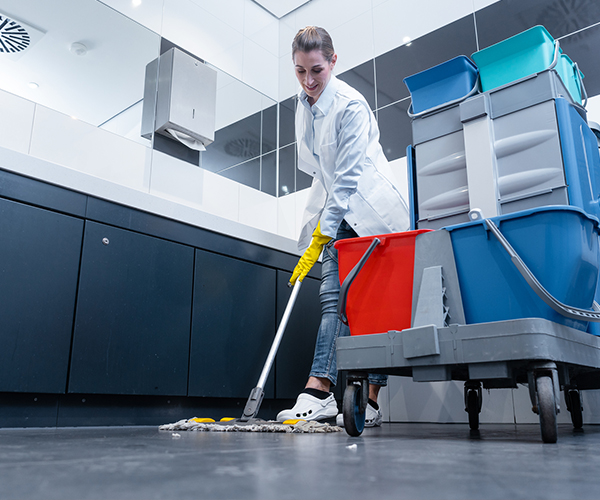6 Mopping Tips
A significant part of cleaning any space is mopping or sweeping. The back-and-forth mopping technique could be therapeutic if you get into a rhythm. You will find yourself in a meditative state, focused on the cleaning task, and with a bit of music, you can keep mopping for days.
However, it is essential to understand some basic principles of mopping. Firstly, there are several different types of mops and mop systems. String mops, sponge mops, dust mops, and microfiber mops, to name a few. They all have benefits and constraints, but our team highly recommends using a microfiber mop. This mop absorbs just as much as a regular sponge or string mop but is much easier to clean due to its microfiber properties. If it’s easier to clean, then fewer bacteria live in the mop and, as a result, cleaner spaces! The following are essential tips to consider before and during mopping any space.
Mopping Tips!
Safety must be taken seriously even during a regular household cleaning event; most concentrated cleaning chemicals could be harmful. Disinfecting a space is a form of “deep cleaning” and requires proper protection to guard from contaminants or toxic elements you could encounter. Below is a list of essential protection elements you must incorporate in your attire before starting.
The right mop for the job – Along with protective gear when cleaning, the proper mop is essential. Whether for commercial or residential applications, choose the microfiber mop system that will allow you to work efficiently.
Get the Right Mop Handle – Think of the potential back pains when choosing your mop handle! Choose a handle that is not too tall or short for your height; you should feel comfortable when holding the mop.
Wring the mop Properly – We recommend using a mop bucket or container to wring the mop rather than using your hands. Whichever type of microfiber mop system you use, removing the excess water content is always a good idea before wiping the floor surface. The concept is not to wash the floor (unless that’s what is required), but a damp wipe and a bucket equipped with a wringing device will assist greatly.
Change the cleaning solution as often as possible – Use your discretion; it depends on how soiled the surface needs to be cleaned. If the floor surface is filthy, you may have to change the cleaning solution often. Ensure the mop is cleaned adequately during the change of solution.
Clean the mop properly – Ensure your mop and equipment are cleaned after every cleaning job. Remember that the floor surface has one of the highest dirt, germs, and bacteria content. So, if the mop is always dirty, it will develop harmful bacteria cultures that could cause health problems.
Store your mop in a dry space – After adequately cleaning it, let it dry properly and store it in a dry place. After washing, the mop is frequently stowed wet, which can also create problems with bacteria. Though mopping is simple, attention to detail will save you time and help maintain healthy spaces.





